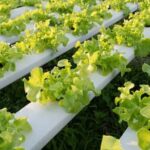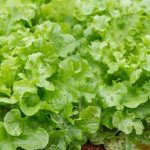Large Raised Vegetable Garden Beds
There are a few things you will need to take into account when deciding to build a raised vegetable garden bed. The size of the bed, the type of soil you will use, and the plants you will be growing.
The size of the bed is important. You will want to make sure that the bed is big enough to accommodate the plants you want to grow. You also need to take into account the size of the plants when deciding on the size of the bed.
The type of soil you use is also important. You will want to use a soil that is high in organic matter. This will help to improve the fertility of the soil and help to retain moisture.
The plants you grow will also be important. You will want to choose plants that are suited to the type of soil and climate you have. Some plants will do better in a raised bed than in in the ground.
Once you have taken these things into account, you can start planning your raised vegetable garden bed.
Terraced Raised Beds Vegetable Garden
If you are looking for an attractive and productive way to garden, consider terraced raised beds. A raised bed is simply a garden bed that is higher off the ground than the surrounding soil. This makes it easier for you to work the soil, and it also keeps the soil warmer in the spring and cooler in the summer.
There are many ways to build a raised bed. You can use lumber, bricks, rocks, or concrete blocks. The key is to make sure that the sides are sturdy enough to hold the soil and plants.
The best way to construct a raised bed is to build it in tiers, or steps, like a terraced garden. This will create more planting space and also make the bed more attractive.
To create a terraced raised bed, you will need to mark out the area where you want the bed to be. Decide how wide you want the bed to be and how high you want it to be. Then, mark out the steps.
The steps should be about 6 inches high and 12 inches wide. You can make them wider or narrower, depending on your needs.
Once you have marked out the steps, use a shovel to dig out the soil. Make sure to remove any rocks or roots. Then, use a trowel to level the soil.
If the soil is too wet or too dry, you can add some compost or peat moss to help improve the soil.
Next, place the blocks or lumber in the desired location and start stacking them up. Make sure the blocks are level and that the lumber is straight.
Once the blocks are in place, fill them with soil. Then, add the plants.
Make sure to water the plants well, especially during the first few weeks after planting.
A terraced raised bed is a great way to garden, especially if you have limited space. It is also a great way to add some interest to your garden.
Wood For Raised Bed Vegetable Garden
A raised bed vegetable garden is a great way to get started in gardening. You can make your own raised bed vegetable garden or buy a kit. The key is to use a good quality wood that will resist decay and last for many years.
There are many types of wood that can be used for a raised bed vegetable garden. Cedar, cypress and redwood are all good choices because they resist decay and rot. Other woods that can be used are pressure treated pine, spruce or fir. These woods are treated with a preservative that will help them resist decay and rot.
Regardless of the type of wood you choose, it is important to make sure that the wood is untreated. Untreated wood will last longer and will not leach any harmful chemicals in to the soil.
If you are building your own raised bed vegetable garden, make sure to use a good quality wood that will resist decay and rot. Cedar, cypress and redwood are all good choices, but other woods such as pressure treated pine, spruce or fir can also be used. Make sure to use untreated wood to avoid leaching harmful chemicals in to the soil.
How To Put A Vegetable Garden To Bed
Fall is the perfect time to put your garden to bed. A well-maintained garden will provide you with delicious, nutritious vegetables all year long. Here are a few tips to help you get your garden ready for winter.
Fertilize: Before you put your garden to bed, be sure to fertilize it with a good organic fertilizer. This will help your plants to stay healthy and strong all winter long.
Mulch: Mulching your garden is a great way to protect your plants from the cold weather. Mulch will help to keep the soil warm and protect your plants from frost.
Water: Make sure to water your garden well before you put it to bed. This will help to ensure that your plants stay hydrated during the winter months.
Cover: If you have a cold winter, it’s important to cover your plants to protect them from the elements. You can use a variety of materials to cover your garden, such as plastic, tarps, or straw.
These are just a few tips to help you get your garden ready for winter. For more information, be sure to check out some of the great gardening books available at your local library.
Pre Emergent Herbicide To Use Around Vegetable Garden Beds
One of the challenges of growing vegetables is dealing with the weeds that compete with the plants for water, sunlight, and nutrients in the soil. Weeds can quickly take over a garden bed, making it difficult to grow vegetables.
One way to control weeds is to use a pre emergent herbicide. A pre emergent herbicide prevents weeds from germinating, or growing, by stopping the weed seeds from sprouting.
There are a number of pre emergent herbicides available, but not all of them can be used around vegetable gardens. Some pre emergent herbicides contain chemicals that are harmful to plants, and can kill or damage vegetables.
One pre emergent herbicide that can be used around vegetable gardens is corn gluten meal. Corn gluten meal is a natural product made from the cornstarch that is left over after the corn oil is extracted. It contains a protein that inhibits weed seed germination.
Corn gluten meal is a non-toxic, organic product, and it is safe to use around vegetables. It is effective at controlling a wide variety of weed seeds, including crabgrass, dandelions, and clovers.
Corn gluten meal can be applied to the soil before or after the vegetables are planted. It is best to apply it before the weeds germinate, but it can also be effective if applied after the weeds have started to grow.
Corn gluten meal is available in most garden centers and online retailers. It is also available as a pre-mixed product that contains other herbicides, such as glyphosate, which can be used to control larger weeds.

If you’re looking to get into vegetable gardening, or are just looking for some tips on how to make your current garden better, then you’ve come to the right place! My name is Ethel and I have been gardening for years. In this blog, I’m going to share with you some of my best tips on how to create a successful vegetable garden.





